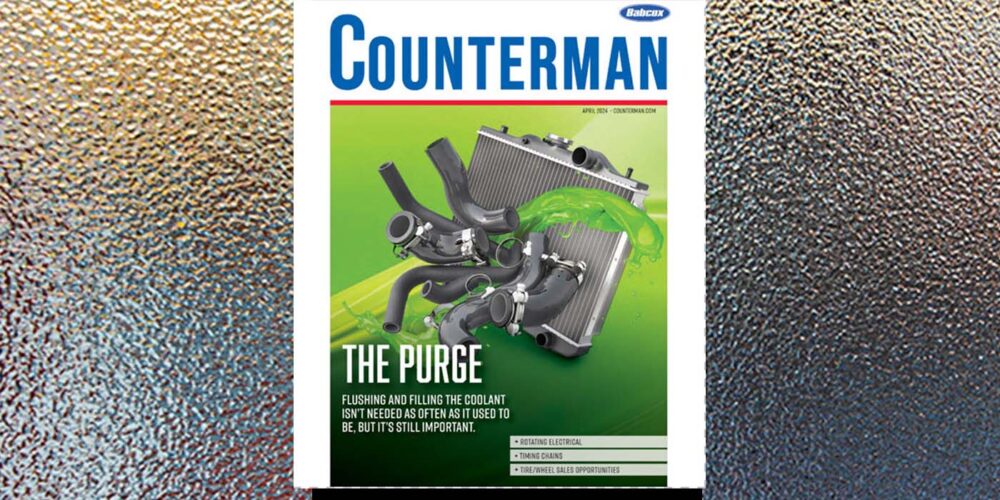What qualifies a mechanic to repair a vehicle? If you’re assuming that all mechanics have earned equal credentials or are licensed, or if you’re assuming that all mechanics receive the same level and degree of training, or if you’re assuming that all mechanics perform at the same level of pride and craftsmanship, you’re wrong. As strange as it may seem, any person with minimal skills and tooling can begin repairing customer vehicles at any time or any place in the independent service market. All it takes to get the toe in the door of many independent shops is a box of tools and a working familiarity with the jargon of the auto repair business.
Behind the scenes in today’s independent service sector, the very words “professional standards” are igniting serious and sometimes bitter debate. At one side of the table are traditionalists who believe in and follow a general repair shop business model that hasn’t substantially changed during the past 60 years. Debating from the other side of the table are visionaries who see the desperate need for the automotive service industry to not only keep up technically, but professionally as well.
The subsequent debate over professional standards between the traditional and visionary groups differs sharply because each group looks at professional standards from different perspectives. The traditional shops look upon improving professional standards as just one more factor that can drive up the cost of labor and of doing business in general. The visionary shops understand their true costs of doing business and look upon setting professional standards as a way of distinguishing themselves from their less-qualified rivals and of setting a price structure that will sustain the levels of profitability they need to survive in today’s technical climate.
BLACKSMITH DAYS
The professional standards issue began early in the century with the introduction of cars like the Model T Ford that were so simple in design that repairs could be made by village blacksmiths, farmers, and even mechanically inclined owners. In contrast, European vehicles were more sophisticated in design and were intended for a more sophisticated market. Consequently, they required more skill to repair. The outcome of these two design trends was that, in Europe, auto mechanics are now regarded as skilled craftsmen whereas in the United States, auto mechanics are regarded as semi-skilled workers.
Europe and Canada continue their tradition of skilled craftsmanship in the automotive service trades by relying on formal apprenticeship programs to teach strict standards of competency, performance and conduct to their students. The United States, on the other hand, relies upon informal on-the-job training and upon public and proprietary trade schools to teach “entry-level skills” to any student who can pay the price of tuition.
The relatively poor average compensation, poor working standards, and poor public image tends to keep recruiting standards low and also tends to fill the current labor ranks with poorly motivated and educated workers. To stem the tide of qualified technicians leaving the trade, many shop owners would like to see a set of threshold and advanced professional standards put in place that would distinguish the craftsman mechanic from their mediocre competitors.
ASE, MAP and ASA STANDARDS
In 1972, the National Institute for Automotive Service Excellence began its mechanic certification program to help mechanics prove competency in eight different automotive repair skill areas. Each multi-question, multiple choice test is written and reviewed by a workshop composed of skilled technicians and trainers recruited from auto manufacturers, dealerships, independent repair shops and aftermarket tool manufacturers.
While many throughout the industry use ASE test results as an indicator of overall excellence, the ASE certification process itself is simply a measurement of technical competency. Nothing in the testing procedure is intended to measure less quantifiable qualities such as craftsmanship, professional conduct and adherence to professional repair standards.
Similarly, the Motorist Assurance Program (MAP) strives to improve technician training and to maintain a set of guidelines for making specific repairs to an automobile. While the MAP standards have broken new ground for predicting the overall effectiveness and reliability of a repair, they do not create, impose or enforce any set of threshold professional standards for becoming an auto mechanic.
The Automotive Service Association (ASA) is dedicated to improving the industry by legislatively representing the independent repair sector and by providing shop management and technical training to its dues-paying members. ASA expects its members to adhere to a comprehensive code of business ethics and recommends a specific number of hours of annual technical training for all technicians employed by ASA member shops. ASA does monitor and investigate issues like shop licensing, technician licensing and technician professional standards because of the effects each has on the shop management process and the industry in general.
Although all of the above organizations either have an interest in, or support, some type of framework for professional standards, none create or enforce professional standards as such. The organizations that can create and enforce professional standards are labor unions and professional organizations. It goes without saying that labor unions are very unlikely to survive in a small business setting and that the very concept of dealing with organized labor is problematic, even for a relatively large independent shop. Most professional organizations for auto mechanics have failed because of apathy on the part of technicians or because the organizations failed to live up to the technician’s expectations.
CURRENT SOLUTIONS
At this moment, it’s not realistic to think that the independent sector will now, or in the distant future, adopt a European-style apprenticeship program. Auto manufacturers, however, are beginning to realize that the traditional, fix-everything, “line mechanic” is becoming an anachronism in the modern shop. Consequently, many auto manufacturers are requiring that a specially trained and qualified technician be assigned to perform specific warranty repairs.
Unless the technician meets those professional standards, the dealership will not be reimbursed for the warranty repair. More often than not, technicians are becoming specialists in core areas such as diagnostics or component repairs. Master technicians are also recognized as such, even though that recognition may not be reflected in a higher pay scale.
WHAT THE AFTERMARKET SHOULD DO
The first step is to understand that not all technicians are created equal. ASE certifications, for example, range from an exhaust system installer’s certification to the Certified Master Automobile Technician (CMAT) with the L1 Advanced Engine Performance certification.
The professional standards sought by most master technicians are the establishment of threshold standards for entry into the trade and the setting advanced standards for performing specific repairs. Threshold standards might include good reading comprehension skills, computer literacy and a solid mathematics and science background. Advanced standards might include passing competency tests before being allowed to diagnose complex electronics or perform specific repairs like the diagnosis and repair of specific types of engines and transmissions. Quite obviously, the advanced standards should be accompanied by a higher pay scale.
Gary Goms is a former educator and shop owner who remains active in the aftermarket service industry. Gary is an ASE-certified Master Automobile Technician (CMAT) and has earned the L1 advanced engine performance certification.







